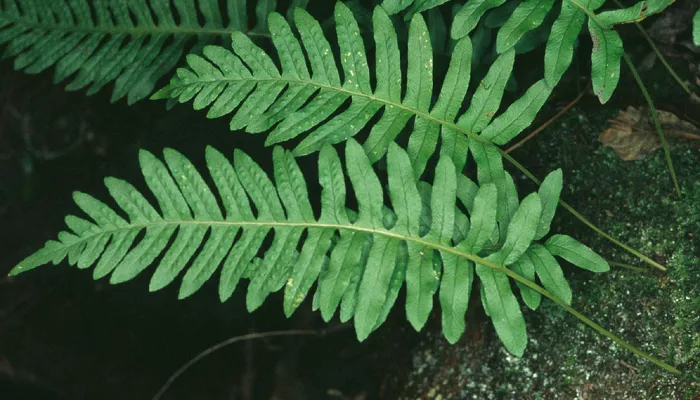| Statistics | |
|---|---|
| Height: | 30cm |
The common polypody is a hardy fern of damp, shady places in woodlands. It also makes a good garden fern. It has ladder-like, leathery foliage with pimply undersides - these spots are the spores.
About
The common polypody is a medium-sized fern that is characteristic of damp, shady gorges and banks in woodlands, as well as rocks, walls and mossy branches. It can also survive in quite dry conditions and is ideal for gardens - plant it in shade under trees, or on walls or gravelly areas for attractive cover.
How to identify
There are three species of polypody, all of which look similar: fronds are made up of simple, finger-like leaflets coming out of the main stem, giving them a ladder-like appearance. The spore-bearing organs are small and round, and are found on the underside of the fronds; they range in colour from bright yellow to orange.
Did you know?
In humid and damp woods, common polypody can grow as an 'epiphyte' (a plant that grows on another plant) on trees.
How people can help
Our gardens are a vital resource for wildlife, providing corridors of green space between open countryside, allowing species to move about. In fact, the UK's gardens provide more space for nature than all the National Nature Reserves put together. So why not try planting native plants and trees to entice birds, mammals and invertebrates into your backyard? To find out more about encouraging wildlife into your garden, visit our Wild About Gardens website: a joint initiative with the RHS, there's plenty of facts and tips to get you started.

